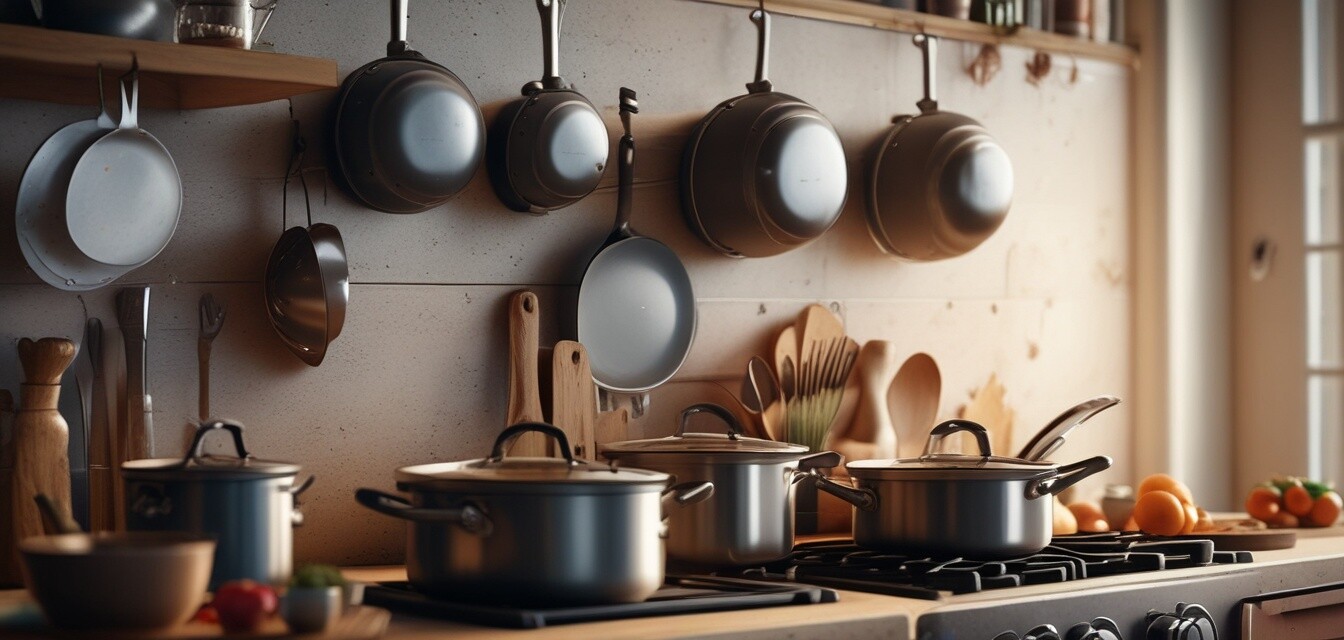
Disclosure: The FTC requires that this article indicate that it was created using AI and is not based on personal experience. It includes affiliate links, which means we may earn a commission if you purchase through these links at no extra cost to you. As Amazon Associates, we earn from qualifying purchases. Product recommendations and endorsements were generated by AI and do not reflect personal opinions or real-world use.
Food Safety Checklist for Group Cooking
Preparing food for large gatherings can be both exciting and challenging. Ensuring food safety is crucial in preventing foodborne illnesses and ensuring your guests have an enjoyable experience. In this comprehensive checklist, we'll outline essential tips and protocols to help you cook with confidence for your group.
Key Takeaways
- Understand the importance of food safety practices before and during cooking.
- Keep a checklist handy to streamline your cooking process.
- Be aware of proper cooking and storage temperatures.
- Practice hygiene to prevent cross-contamination.
- Utilize the right kitchen equipment for large-scale cooking.
Understanding food safety in group cooking
When cooking for groups, the risk of foodborne illnesses can increase, making food safety protocols more critical. Understanding the primary aspects of food safety will aid in ensuring that every dish prepared is delicious and safe to consume.
The Four Key Steps to Food Safety
- Clean: Ensure that your cooking area, utensils, and hands are clean before you start.
- Separate: Avoid cross-contamination by using separate cutting boards for raw meats and vegetables.
- Cook: Use a food thermometer to ensure food is cooked to the right temperature.
- Chill: Refrigerate leftovers promptly to avoid bacterial growth.
Essential Safety Checklist for Group Cooking
| Checklist Items | Description | Importance |
|---|---|---|
| Hand washing | Wash hands with soap and water before and after handling food. | Reduces the spread of bacteria. |
| Clean surfaces | Use sanitizer on kitchen surfaces and cutting boards. | Prevents food contamination. |
| Cooking temperatures | Use a thermometer to check internal temperatures of meats. | Ensures food is cooked safely. |
| Food storage | Store perishables in the refrigerator or freezer. | Stops bacterial growth. |
| Labeling | Label all containers with the date and contents. | Makes it easier to track freshness. |
Practical Tips for Maintaining Food Safety
- Use plastic or disposable utensils when serving food at buffets to limit contact.
- Keep hot foods hot (above 140°F) and cold foods cold (below 40°F).
- Consider using a commercial food warmer to maintain temperature.
- Always ask guests about allergies to avoid cross-contact with those ingredients.
- Encourage cleanliness by having hand sanitizer available for guests before meals.
Storing Leftovers Safely
Leftovers can be a significant part of catering for groups. Follow these practices to ensure food remains safe for future consumption:
- Cool leftovers quickly and divide large portions into smaller containers.
- Aim to refrigerate leftovers within two hours of serving.
- Consume the refrigerated leftovers within three to four days.
Handling food allergies
Understanding food allergies is critical in group cooking. To manage allergies effectively:
- Communicate with guests beforehand to learn about their allergies and dietary restrictions.
- Prepare allergen-free dishes separately and use different cooking utensils.
- Label all dishes during serving to avoid confusion.
Conclusion
Food safety is paramount when cooking for groups. By following this checklist and executing best practices in hygiene and food handling, you can ensure a delicious and safe dining experience. For more tips on cooking for groups, check our Tips and Techniques category. Happy cooking!
Pros
- Ensures the health and safety of guests.
- Boosts confidence in cooking for large groups.
- Reduces the risk of foodborne illnesses.
Cons
- Requires additional preparation time.
- May require specialized equipment.